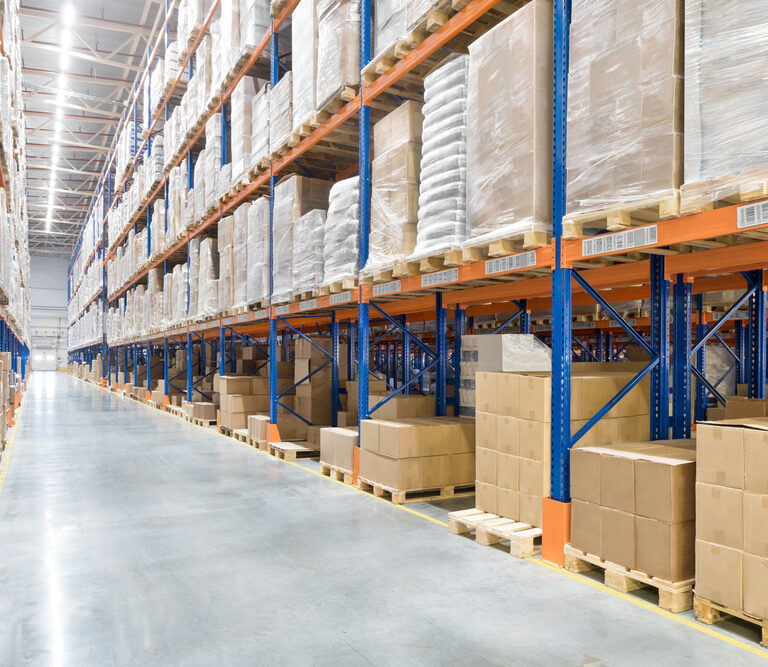The future of supply chain is here and it’s redefining what competitive advantage looks like.
As global markets evolve and disruptions persist, supply chain leaders are transforming their operations into intelligent, adaptive ecosystems that leverage data, automation and AI to drive measurable business results.
At enVista, we define the Supply Chain of the Future as an integrated and agile strategic asset that enables organizations to operate more efficiently, make faster decisions and respond in real time to changing conditions.
From Operational Necessity to Strategic Advantage
When organizations invest in digital transformation across their planning, procurement, warehousing and transportation networks, they gain the visibility, control and flexibility needed to outperform competitors.
Through enVista’s Supply Chain Concept 5.0, companies can achieve:
- Up to 30% lower costs through automation and process optimization
- Up to 75% fewer lost sales by improving demand forecasting and service levels
- Up to 90% greater task performance by automating manual workflows
- Up to 75% lower inventory levels with real-time demand visibility
- Up to 50% faster lead times through intelligent, responsive planning
These results underscore a fundamental truth: when executed strategically, supply chain transformation delivers both operational efficiency and lasting competitive advantage.
Navigating Global Volatility and Risk
Recent years have reinforced a critical lesson—global events will continue to disrupt trade, production and logistics. From the pandemic and canal blockages to tariff shifts and extreme weather, volatility is now a constant variable.
Forward-looking companies are adapting by regionalizing their networks and investing in supply chain resilience. At the same time, sustainability and regulatory compliance have become non-negotiable. Traceability, carbon accounting and circularity are now core elements of supply chain strategy—not afterthoughts.
Connected Planning: The Heart of Supply Chain Agility
Integrated Business Planning (IBP) allows organizations to connect demand, supply, financial and operational planning in a single, technology-enabled process.
Where Sales & Operations Planning (S&OP) manages long-term strategy, Sales & Operations Execution (S&OE) focuses on short-term agility – adjusting inventory, replenishment and transportation as market conditions change.
This integrated approach bridges the gap between planning and execution, enabling proactive decision-making and continuous alignment across departments and partners.
Warehouse Automation and Digital Orchestration
enVista’s enMotion™ Warehouse Execution System (WES+) unifies automation, robotics and human workflows within a single digital ecosystem. By integrating mobile robots, conveyors, sortation systems and human operators, enMotion delivers a warehouse that is intelligent, scalable and adaptive.
The result is an agile fulfillment operation that can flex with changing volumes, product mixes and customer expectations, all while reducing cost and risk.
Smarter Procurement and Vendor Management
Procurement is evolving from transactional sourcing to strategic collaboration. AI-enabled ordering, automated supplier scoring and predictive analytics now allow companies to proactively manage supplier performance and risk.
By leveraging data-driven insights, organizations can identify potential disruptions before they occur, strengthen supplier relationships and align procurement decisions with long-term business goals.
Transportation in Motion: Intelligent, Integrated and Predictive
Transportation is becoming a hub of innovation. AI-driven route optimization, digital twins and multimodal visibility solutions enable companies to adapt faster and move goods more efficiently.
As supply chain ecosystems expand, the integration of Transportation Management Systems (TMS) with predictive analytics and mobility-as-a-service (MaaS) capabilities will be key to balancing cost, speed and sustainability.
The AI Advantage
Artificial intelligence is the catalyst that powers the future of supply chain transformation.
From demand forecasting and supplier risk assessment to warehouse automation and transportation optimization, AI enables real-time insight and predictive action across the entire network.
With AI and machine learning embedded throughout the ecosystem, organizations gain a critical edge—turning reactive decisions into proactive strategy.
The Digital Backbone: Unified Supply Chain Architecture
A unified digital architecture integrates ERP, WMS, TMS and MES platforms into a single, interoperable ecosystem. This foundation ensures data integrity, promotes process automation and accelerates innovation by enabling low-code integration and faster deployment of new capabilities.
The result: seamless collaboration, improved decision-making and an infrastructure that evolves as quickly as the business does.
From Reactive to Proactive: The Journey Forward
The path to the future supply chain isn’t about incremental change; it’s about transformation.
Organizations that succeed will embrace a proactive mindset and digital-first operating model built around:
- Real-time decision-making
- Automated and optimized operations
- End-to-end data integration
- Cost and service balance
- Agility and resilience
The Takeaway
The supply chain of the future is intelligent, connected and human-centered. It’s designed not only to withstand disruption but to turn it into opportunity. By investing in AI, automation and integrated planning today, companies can unlock new levels of efficiency, responsiveness and growth tomorrow.





